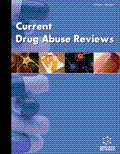Abstract
Addiction to methamphetamine (METH) is thought to be mediated by dopaminergic effects in the reward pathway in the brain via the A10 dopaminergic pathway. Herein we describe an overview of the results of the basic preclinical science undertaken to provide mechanistic insights into the action of amphetamines in general and METH in particular. A brief history of amphetamine and METH use and abuse is given, and an overview of the relevant chemical aspects of amphetamine as they relate to neurotransmitters in general is made. A review of the methods used to study the biochemical effects of METH is outlined. Finally, a focused analysis of the kinetic mechanisms of action of the amphetamines in general, and METH in particular, at the transmembrane transporters and at the intracellular vesicular storage sites is made. A description of how catecholaminergic and serotonergic nerve signaling may be altered by METH is proposed. Overall, the emphasis here is on differences in effects observed between the striatal (the A9 substantia nigral dopamine pathway) and nucleus accumbens (the A10, ventral tegmental pathway) areas of the brain following acute as well as repeated dosing and withdrawal.
Keywords: Amphetamine, dopamine, dopamine transporter, drug addiction, methamphetamine, mesocorticolimbic dopamine system, norepinephrine, norepinephrine transporter, oxidative stress, serotonin, serotonin transporter, tryptophan hydroxylase, tyrosine hydroxylase, vesicular monoamine transporter 2.
 65
65















